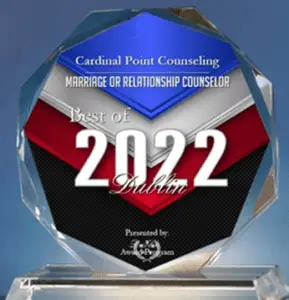In Emotionally Focused Therapy (EFT), partners often fall into patterns of a pursuer and a withdrawer. Both typically act in ways they think will help their relationship, but this typically backfires. The withdrawer often fears if they don’t retreat, there will be arguments, hurt feelings, or nothing positive accomplished. The pursuer typically feels a need to address the problem. The more the withdrawer withdraws, the more the pursuer pursues.
These reactions often stem from fear. There can be fear of abandonment, conflict, or making things worse. Partners may express that they feel an emotion like anger, but anger is often a secondary emotion. Anger may stem from embarrassment, contempt, loneliness, sadness, hurt, or many other feelings. These are the primary and vulnerable emotions that must be understood for healing.
Your partner probably doesn’t understand what is going on with you either. Pursuing can come across as attacking, disrespect, anger, and fighting. Withdrawing can come across as stonewalling, avoiding, giving up, and disrespect. You may be withdrawing from hurtful emotions, but it typically comes across as withdrawing from your partner. When pursuers understand what their partner is going through, they may be less likely to feel hurt themselves, and less likely to engage in behaviors their partner may find as attacking.
A pursuer may fear that their partner wants to leave them when their partner withdraws. They may feel inadequate or unworthy. They may be desperate for answers and keep pursuing more and more until they get those answers. The secondary, reactive emotion may be what pushes a partner away.
Getting at the real, primary emotion behind pursuer and withdrawer behavior can be essential for you and your partner.







